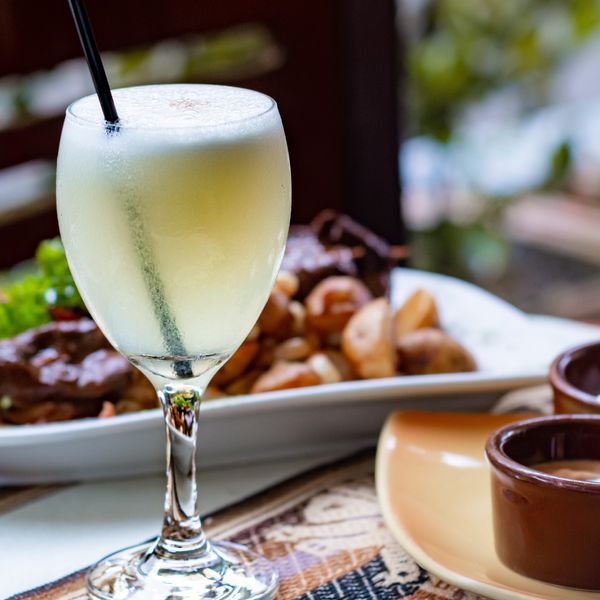In The Community
Latin American gastronomy is known for its rich flavors, varied textures, and inventive use of locally sourced ingredients. One of these components, often overlooked, is the use of insects in traditional dishes. For many Latinos, insects are not just a novelty but a part of their culinary identity.
Eating Insects: An Ancient Practice

Insect consumption, or entomophagy, is not a recent fad but rather a practice dating back thousands of years. In pre-Columbian times, indigenous communities across Latin America, from Mexico to Brazil, regularly incorporated insects into their diet. Insects were a reliable food source, easy to find, and rich in essential nutrients.
The use of insects in Latino cuisine varies across the region, and it's closely tied to cultural identity. For example, in Mexico, insects like grasshoppers (chapulines), maguey worms (gusanos de maguey), and ant eggs (escamoles) are regional delicacies with deep cultural roots. In Brazil, Queen ants (Içá or Tanajura) are collected, fried, and eaten as a seasonal snack. The custom of insect consumption is also part of religious and festive events.
Some of the most common types of insects consumed include:
Chapulines (Grasshoppers)

Photo by latusavf on Instagram
Frequently found in Mexican markets, chapulines are rich in protein, fiber, good fats, and are a source of vitamins and minerals. Mix sautéed chapulines with onions, chili peppers, and tomatoes, then spoon this filling into a soft tortilla for some delicious tacos, or add a handful of toasted chapulines to your traditional guacamole recipe to provide a crunchy texture and an extra dose of protein!
Escamoles (Ant eggs)

Known as 'Mexican caviar,' these ant larvae are a good source of protein and low in fat. For a delicious dish, you can sauté escamoles with onions, garlic, and epazote, then serve with warm tortillas as a taco or use escamoles as the main protein in a clear soup along with vegetables like carrots, zucchini, and peas.
Gusanos de Maguey (Maguey worms)

Photo by bichoscomestiblesbyazcamolli on Instagram
These caterpillars are found in the Agave plant and are high in protein and vitamins. Add fried gusanos de maguey to your guacamole for a unique twist and extra protein, or add sautéed maguey worms to melted cheese and serve with tortillas for a delicious queso fundido.
Içá or Tanajura (Queen ants)

Photo by sylviamacedo.photograf on Instagram
Consumed in Brazil, these insects are high in protein and low in saturated fats. Fry the ants with garlic, onions, peppers, and soy sauce, then serve over steamed rice for a protein-packed meal, or add fried queen ants to a clear vegetable soup for an extra boost of protein and unique flavor.
Are insects the future of sustainable and nutritious protein?

Insects provide a substantial nutritional punch, with high levels of protein, fiber, and micronutrients like iron, zinc, and essential vitamins. Their nutritional profile makes them an excellent alternative to traditional sources of protein like beef, chicken, or pork.
From an environmental perspective, insect farming has a significantly smaller carbon footprint than livestock farming. Insects require less land, water, and food and produce fewer greenhouse gases. They can be farmed sustainably and could help address food security issues as global populations continue to rise.
Incorporating insects into the diet is not merely about novelty or shock value. For many Latinos, it's about preserving a historical tradition, a connection to their pre-Hispanic ancestors, and a sustainable way of eating. As the world seeks more environmentally friendly protein sources, we could learn a lot from the Latino tradition of entomophagy.
Latin America is known for its cultural traditions, music, and delicious cuisine. Their mixology, however, can't be left behind. Drinks are a beautiful means of cultural exploration that are always sure to bring more zest to your taste buds and fun to the gatherings. Explore the list...
Tequila Sunrise from Mexico
 Photo by Spencer Bergen on Unsplash
Photo by Spencer Bergen on UnsplashLatin America, a region teeming with rich and diverse cultural traditions, is well-known for its music, vibrant festivities, and delicious cuisine. From the cool heights of Mexico to the balmy coasts of Brazil, we can't forget about some of their most well-known cocktails.
Let's start our journey with an internationally recognized cocktail from Mexico: the Tequila Sunrise. This drink is made with tequila, orange juice, and grenadine. Its name originates from the way the grenadine settles at the bottom, creating a sunrise effect. While it has become a global sensation, its origins are deeply rooted in Mexico's tequila culture. This drink is a tribute to the beautiful sunrises you'd witness in the agave fields of Jalisco, where some of the best tequilas are distilled.
Pisco Sour from Peru and Chile
 Photo by Lorena Samponi on Unsplash
Photo by Lorena Samponi on UnsplashNext, we travel to Peru and Chile for the illustrious Pisco Sour. While both nations claim ownership of this delicious cocktail, the spirit of camaraderie remains, with both versions being delightful. This is a concoction of pisco (grape brandy), lime juice, simple syrup, egg whites, and a dash of Angostura bitters. It’s a smooth, tangy cocktail that pairs beautifully with traditional dishes like ceviche or empanadas.
Caipirinha from Brazil
 Photo by Maria das Dores on Unsplash
Photo by Maria das Dores on UnsplashHeading eastward, we find ourselves in Brazil, the home of the Caipirinha. This refreshing drink is made with cachaça (a spirit derived from sugarcane juice), lime, and sugar. It's the national cocktail of Brazil and an essential part of any celebration, especially during the vibrant Carnival season. The Caipirinha is also versatile, allowing for a variety of fruits to be used instead of lime, such as kiwi, passion fruit, or strawberries.
Michelada from Mexico
 Photo by Ahtziri Lagarde on Unsplash
Photo by Ahtziri Lagarde on UnsplashReturning to Mexico, we have the Michelada. This is not your typical cocktail; it is a beer-based concoction, mixed with lime juice, assorted sauces, spices, and sometimes tomato juice. This drink is often enjoyed during hot summer days, and it’s a perfect accompaniment to a Sunday brunch or a beach picnic. It's spicy, tangy, and refreshingly cool.
Cuba Libre from Cuba
 Photo by Giorgio Trovato on Unsplash
Photo by Giorgio Trovato on UnsplashNow, let's sail to the beautiful island of Cuba for our final stop. Here, we find the Cuba Libre, a simple yet iconic cocktail. The ingredients are rum, cola, and a squeeze of lime juice. Despite its simplicity, it's a drink that carries a sense of history and rebellion, famously associated with the phrase "¡Por Cuba libre!" ("For a free Cuba!") during the War of Independence.
As we conclude our journey through Latine mixology, it’s important to remember that these drinks not only quench our thirst but also embody the essence of their respective cultures. They carry stories of celebration, of community, and of life in their native countries. Embrace your Latina roots or show your appreciation for Latin American culture by exploring these traditional drinks. And remember, always enjoy responsibly. Salud!
- How to Make the Coquito of Your Dreams ›
- 4 Refreshing Limonada Recipes To Beat The Heat ›
- What Makes Spanglish So Unique and Powerful? - Luz Media ›
- Hop into the Stories Behind These Latino-Owned Breweries - Luz Media ›
- Breaking Down Quinceañeras: A Latina Rite of Passage - Luz Media ›
- The Coquito Recipe You've Been Waiting For ›
- Celebrate National Mojito Day, the Cuban Way ›



